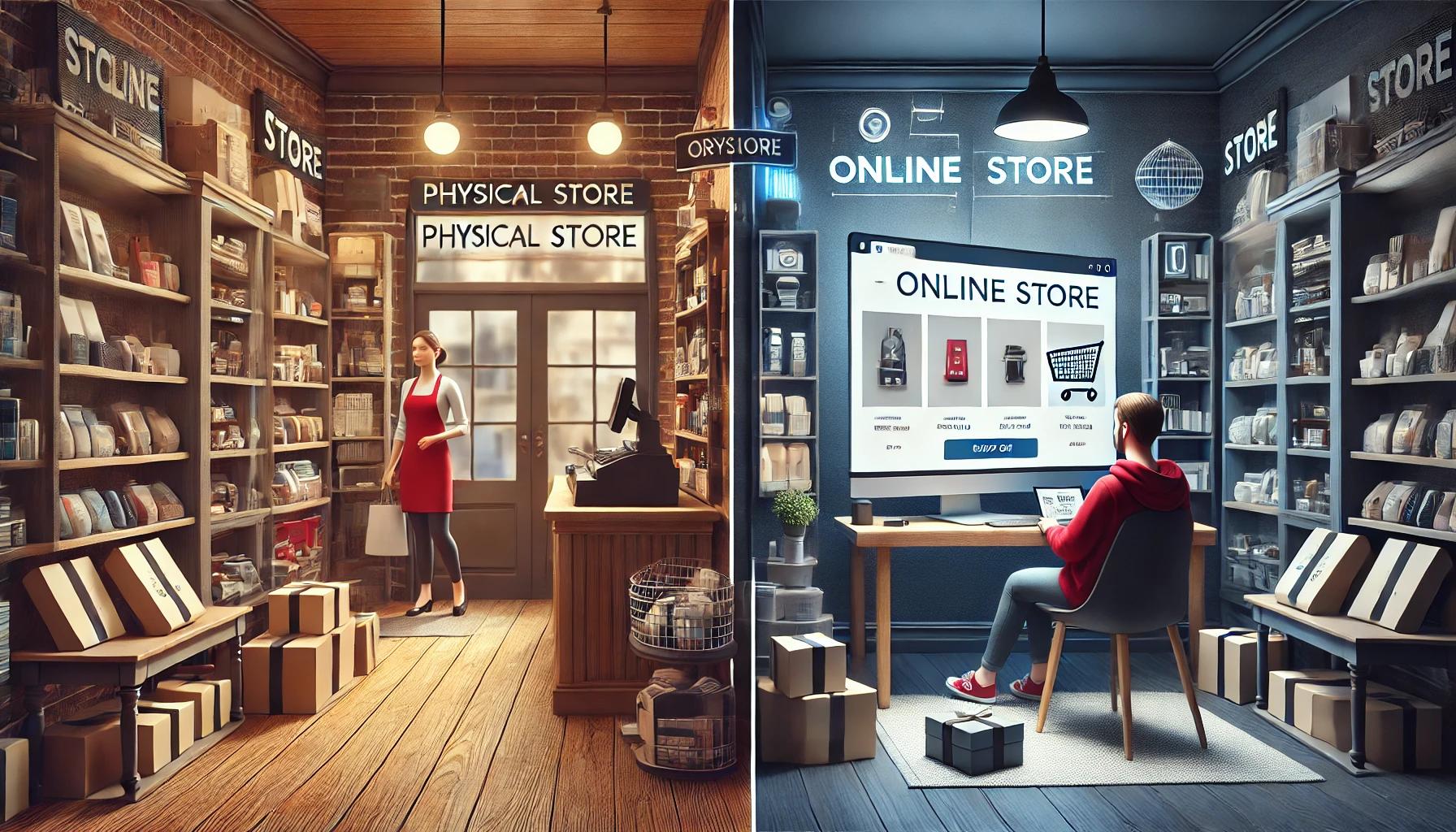Traditional vs. Online Stores: Pros and Cons. A Comparison of Retail Models
In today's world, retail is undergoing significant changes. Traditional physical stores (brick-and-mortar) are competing with online platforms, with each model offering its own advantages and disadvantages. In this article, we’ll provide a detailed comparison of these two approaches, drawing from market research and data.
Advantages of Traditional Stores
Physical Interaction with Products One of the key advantages of traditional stores is the ability to touch, see, and assess products before purchasing. For consumers, especially in categories like clothing, shoes, and furniture, this is crucial. According to a study by McKinsey, 60% of shoppers prefer to see a product in person before buying it .
Immediate Product Availability Shopping in physical stores allows customers to get their purchases immediately after payment, which is especially important for impulse buys or urgent needs. This is a significant advantage over online stores, where delivery can take several days or even weeks.
Customer Service Traditional stores often provide higher quality and personalized customer service. Sales staff can assist buyers on the spot, which often speeds up the decision-making process.
Shopping Experience and Atmosphere Visiting a physical store can be a part of the overall shopping experience. This is particularly relevant for premium brands, where the store atmosphere, interior design, and service are integral to the marketing strategy.
Disadvantages of Traditional Stores
Limited Selection Physical stores are restricted by the size of their space, and the product range is often smaller compared to online stores. According to Statista, consumers are increasingly turning to online shopping due to the wider selection of products available .
High Operating Costs Running a physical store requires significant costs, including rent, employee wages, utilities, etc. This forces traditional stores to set higher product prices, making them less competitive compared to online platforms.
Limited Operating Hours Brick-and-mortar stores have fixed operating hours, which creates limitations for customers. This is especially inconvenient for busy people who may struggle to find time to visit a store.
Advantages of Online Stores
Accessibility and Convenience The primary advantage of online stores is the ability to shop 24/7, from any location with internet access. According to research by Shopify, 73% of consumers choose online shopping for its convenience .
Wider Product Selection Online stores offer a vast range of products, often surpassing the selection available in physical stores. This allows customers to find rare or niche products that may not be available in brick-and-mortar shops.
Lower Prices and Frequent Discounts Due to lower operating costs, online stores can offer products at lower prices. They also frequently run promotional sales and discounts, making online shopping more cost-effective.
Personalized Recommendations Online stores use customer data to provide personalized offers and recommendations, which increases the chances of successful sales. Amazon, for example, uses machine learning algorithms to suggest relevant products .
Disadvantages of Online Stores
Lack of Physical Interaction with Products For many shoppers, the inability to physically inspect a product before purchasing is a significant drawback. This is particularly true for clothing, shoes, and electronics, where factors like fit, size, or material texture are important.
Delivery Wait Times Online shopping doesn’t offer instant product availability. Despite improvements in logistics and shorter delivery times, customers still often have to wait several days to a week for their purchases.
Fraud Risks Online stores can be vulnerable to fraud, and fake websites or scam schemes are not uncommon. This creates risks for customers, especially if they are unsure about the seller’s reliability.
Returns and Exchanges While return procedures exist, the process can be long and inconvenient. This is particularly frustrating for customers who prefer quick resolution, which is easier in traditional stores.
Comparing the Models
Traditional and online stores represent two opposing business models, each attracting different consumer segments. Shoppers appreciate physical stores for the immediate availability of products and personalized service, while online platforms offer convenience, a wider range of products, and more competitive prices.
Some brands have found a solution in adopting an omnichannel strategy, which combines both approaches. For example, Zara and IKEA offer both physical retail locations and convenient online platforms, allowing them to adapt to the diverse needs of their customers .
Conclusion
Each model—traditional and online—has its own strengths and weaknesses. The choice of the most suitable model depends on the specific conditions of the business and the preferences of its target audience. In today’s world, successful companies strive to integrate both approaches to maximize customer satisfaction and increase profits.
